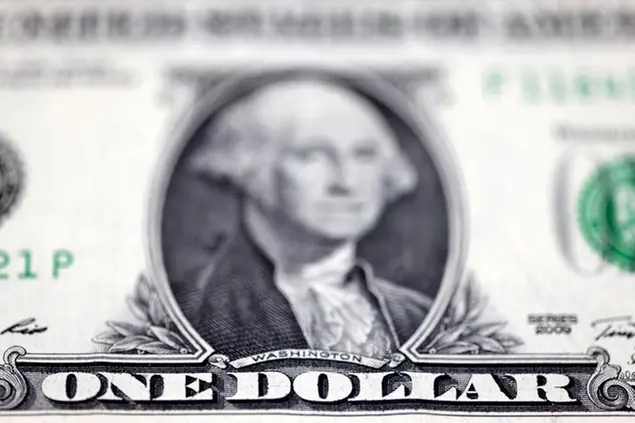PHOTO
LONDON/TOKYO - The dollar edged higher on Wednesday after falling to its lowest level against the euro this year as investors waited for revisions to U.S. employment data and a speech by Federal Reserve Chair Jerome Powell.
The euro climbed to $1.1132, the highest since December, as investors increased their bets on Fed rate cuts this year, dragging down U.S. bond yields and weighing on the dollar. It was last down 0.1% at $1.1119 as the dollar found a footing.
Some analysts have attributed the fall in yields, which makes U.S. bonds less attractive and weighs on the dollar, to ongoing concerns about the economy and nerves about the revision of U.S. non-farm payrolls data.
The Bureau for Labor Statistics will release revised figures for numbers from April 2023 to March 2024 later on Wednesday, using tax data.
"With inflation slowly converging to target, financial markets are increasingly sensitive to recession concerns, and thus a downward revision of job numbers could bring about another risk-off episode," said Michiel Tukker, senior European rates strategist at lender ING.
A weak Aug. 2 payrolls report sent traders racing to price in prospects of the Fed needing to slash interest rates by a half percentage point at its mid-September policy meeting.
However, a run of better macroeconomic data has since seen the odds flip, with traders now seeing a 28% of a bigger reduction.
The U.S. dollar index fell to its lowest since the end of December overnight at 101.30 but was last up 0.12% at 101.51.
Sterling rose to its highest since July 2023 on Wednesday at $1.3054 but also gave up some ground to sit 0.1% lower at $1.3019.
Jane Foley, head of FX strategy at Rabobank, said there was no obvious reason behind the fall in the dollar and that markets were more jumpy with many traders off for summer breaks.
Powell's keynote speech on Friday at the Kansas City Fed's Jackson Hole summit will be parsed carefully for any hints on the likely size of a rate cut next month, and whether borrowing costs are likely to be lowered at each subsequent Fed meeting.
The move in yields and the dollar "was perhaps a function of thin summer trading," Foley said. "Clearly it does set us up for some risk if on Friday Fed Chair Powell isn't as dovish as the market is positioned for him to be."
The dollar was volatile against Japan's currency , sagging 0.21% to 144.945 yen at one point, before last trading 0.55% higher at 146.03 yen.
Traders will have a close eye on a special session of Japan's parliament on Friday, when politicians will scrutinise the Bank of Japan's unexpected decision to raise interest rates last month and the central bank's sudden hawkish turn.
BOJ Governor Kazuo Ueda will testify and focus will be on his tone after his influential deputy Shinichi Uchida adopted a more dovish stance earlier this month, helping calm markets.
More than half the economists in a Reuters poll published on Wednesday expect the BOJ to raise rates again this year, with those who had a view on which month leaning towards a December increase.
Australia's dollar dipped from the one-month high of $0.6749 from Tuesday, last changing hands at $0.6737.
(Reporting by Harry Robertson in London and Kevin Buckland in Tokyo; Editing by Christopher Cushing, Jamie Freed and Toby Chopra)
